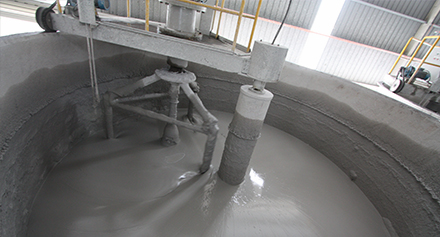Autoclaved Aerated Concrete (AAC)
AAC is a lightweight cellular material which is formed by a chemical reaction between finely divided calcareous and siliceous materials. The calcareous component is usually lime and/or cement. The siliceous component usually consists of natural or ground sand and/or industrial by-products such as slag and pulverized fuel ash (PFA), also known by fly ash. The cellular structure is achieved by either a chemical process causing aeration, or by introducing air voids by mechanical means into a slurry which contains no coarse material The aeration is caused by the addition of a small quantity of acidic aluminium paste that reacts with the alkaline lime &; cement to expand the mixture.
This reaction causes the release of hydrogen gas and the formation of tiny, finely dispersed bubbles. The hydrogen dissipates after the reaction process leaving the air filled bubbles. After mixing, the slurry is placed in a mould for curing. For products that require reinforcing, the corrosion protected steel reinforcing mesh is placed in the mould before the slurry is added. After a few hours curing the product is firm enough to be removed from the moulds and transported to a cutting machine where it is cut precisely into the required sizes. Waste material is recycled back for crushing and remixing.

Autoclaving is the final stage of curing the material under steam pressure. This takes up to 12 hours, with a pressure gradient reaching around 1.25MPa at and 190oC. Steam is cycled through successive autoclaves, reducing energy loads. The blocks, panels and lintels are removed from the autoclave and packed ready for transporting. The AAC produced has a dry density of approximately 550kg/m3, giving it a dry density approximately one-quarter the density of normal reinforced concrete.

Questions? Call us at 606 987 2288
Or click here to view other contact details Contact Us
Accessories










